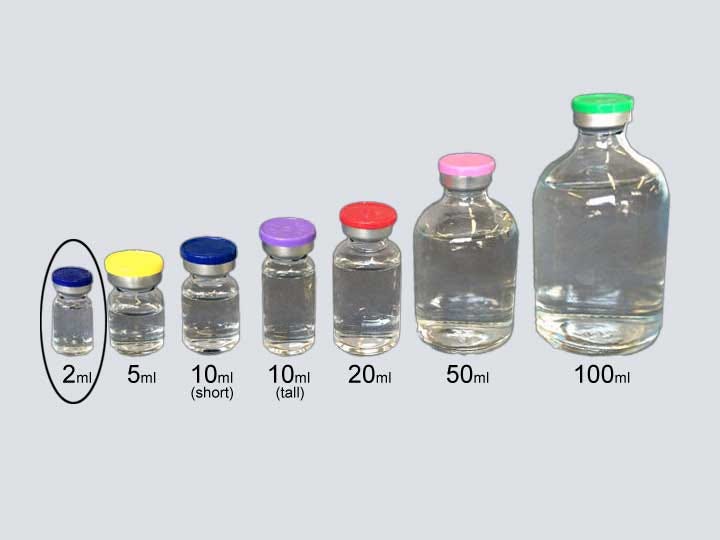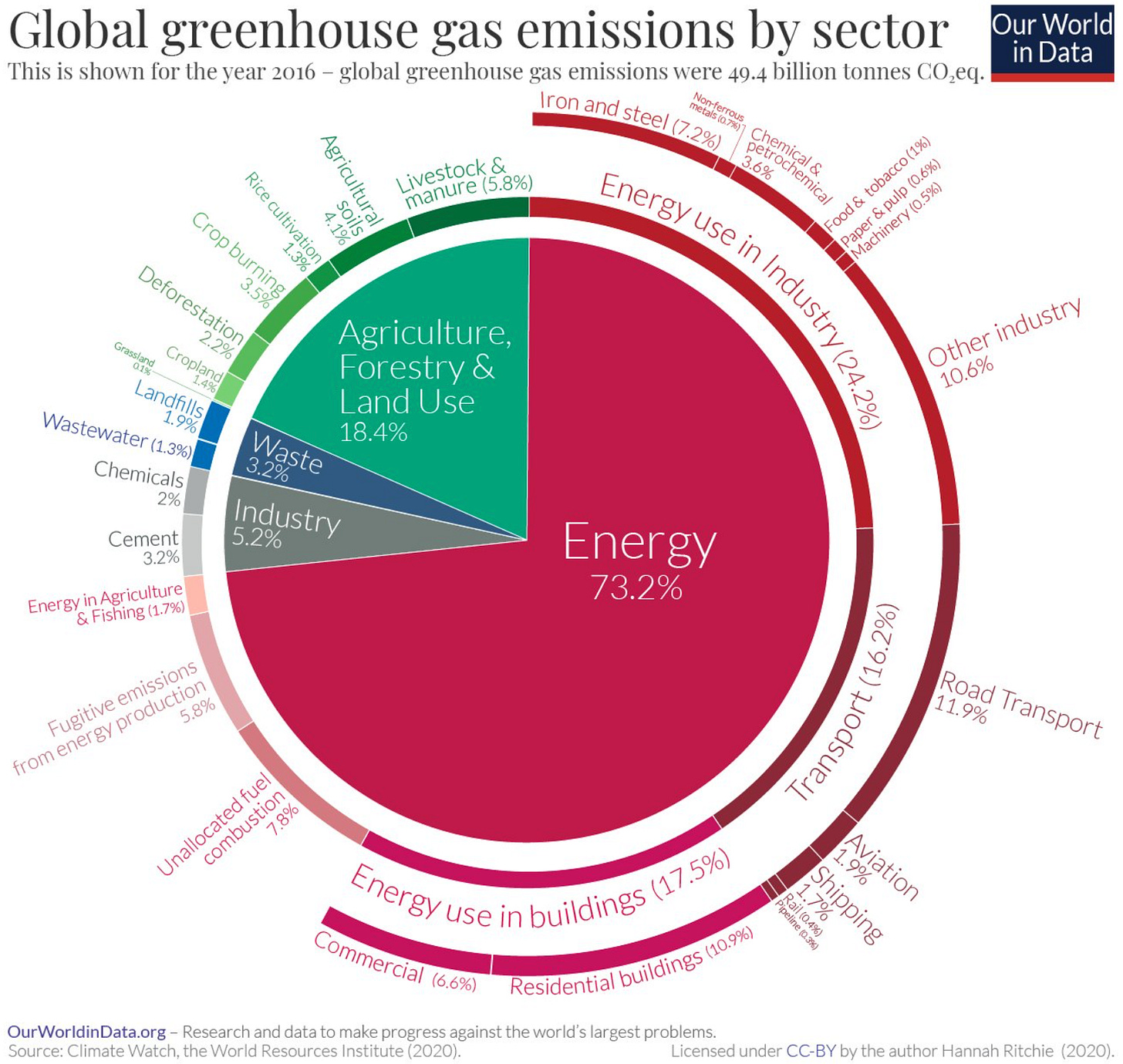AI Isn't Bad For The Environment
Footnotes to Masley
1 Introduction
If you spend time in liberal spaces and mention using AI, odds are good that you will hear complaints about its supposedly disastrous environmental impact. AI has become a boogeyman of the environmentalist movement, and if you describe using it for non-urgent purposes, people will act like you just admitted to going over to other people’s recycling bins and dumping them into the trash.1
But this is, to be blunt, total nonsense. AI isn’t actually bad for the environment, and if you are concerned about your environmental impact, you shouldn’t even be thinking about your use of AI prompts. The environmentalist case against AI completely falls apart upon even cursory examination of the facts.
If you want to read more about the environmental impact of AI, I highly recommend
’s posts on the subject. Andy is one of the most thoughtful and careful writers on substack, but he is unfortunately cursed with an inability to write posts with fewer than 25,000 words and with anything other than a comprehensive investigation of every counterargument, however bad. Andy got sort of obsessed with the topic and wrote about a dozen articles about AI not being bad for the environment that are extremely comprehensive and convincing.You can think of this article as footnotes to Andy—summarizing, for an audience who hasn’t read the book-worth of material he’s written about it, his arguments for why AI isn’t bad for the environment. In this post I’ll try to tell you what you need to know to see what’s wrong with common environmentalist arguments against AI.
2 Water
You hear a lot that AI uses staggeringly large amounts of water. A reasonable estimate of how much water a single AI prompt uses is 2mL. That’s about this much:
Now, that seems like a lot if you use AI frequently. Over the course of a day, if you compare it to one glass of water. But this neglects how much water Americans typically use. On average, Americans use 1,600 liters of water daily, enough for 800,000 ChatGPT prompts. A lot of this is through agriculture, showers, and energy use. Lots of things we do routinely use millions of times more water than a prompt—see, for example:
Leather Shoes - 4,000,000 prompts’ worth of water
Smartphone - 6,400,000 prompts
Jeans - 5,400,000 prompts
T-shirt - 1,300,000 prompts
A single piece of paper - 2550 prompts
A 400 page book - 1,000,000 prompts
In fact, AI probably reduces water use! If people are spending time prompting Chat-GPT, that’s time they’re not spending on activities that require a lot more water.
On a national level, data centers, which mostly power the internet and only are partially used for AI, use only .2% of water. Americans spend about half their time online, and so the internet uses vastly less energy per hour than other things. Golf alone uses ten times as much water as all data centers. Andy has a nice chart that illustrates how little water is used by data centers compared to other stuff:
And while there are lots of sensationalist news stories about AI supposedly harming local water, there are no places anywhere where AI has restricted local water access. The sensationalist news stories generally point to a place where water is scarce, note there’s a data center using a lot of water, and then act like it’s causal, even though in the data center uses a tiny fraction of the water in the area. This is a bit like noting that some city has a water problem, and then blaming it on Bob who—you note—drinks a lot. It’s just a completely unserious way to write about the problem.
A single hamburger uses about 600 gallons of water. So eating a single hamburger is over a million times worse for water usage than prompting AI. AI prompts also have the added advantage, over hamburgers, of not requiring a cow to be mistreated and killed. If you prompt chat-GPT 1,000 times per day for 70 years, your total water use will be about equal to eating 25 hamburgers. So if you’re concerned about water use, reducing your use of AI is a bit like being concerned about things that are large, and focusing entirely on one lone mouse while ignoring the country of Russia.
From what I can tell, the AI water use panic is just totally made up.
3 Energy
Each Chat-GPT prompt uses about .3 watt-hours of energy. If you count indirect costs, then there’s about as much emissions as that associated with .8 wh. This isn’t very much—to quote Andy:
How concerned should you be about spending 0.8 Wh? 0.8 Wh is enough to:
Drive a sedan at a consistent speed for 4 feet
Spend 1 minute reading this blog post. If you’re reading this on a laptop and spend 20 minutes reading the full post, you will have used as much energy as 20 ChatGPT prompts. ChatGPT could write this blog post using less energy than you use to read it!
In Washington DC where I live, the household cost of 0.8 Wh is $0.00013. The average DC household uses 1,200,000 times as much energy every month.
A single trans-Atlantic flight uses about as much energy as 12 million Chat-GPT prompts. So if you’re concerned about your energy use, you should be vastly more concerned about flights and agriculture. If you want to reduce your expected water use, rather than prompt Chat-GPT one fewer time, you can roll a twelve-million sided die, and then take one fewer flight if it comes up 513,433.
All data centers, which power the entire internet, not just AI, are responsible for around 2% of emissions. This sounds like a lot until you remember Americans spend half our time on the internet. Data centers are, in fact, quite efficient and probably decrease overall energy use, because time spent on the internet is time we’re not spending driving or using energy in other ways. It looks like in total AI is responsible for about .11% of global emissions, vastly less than cement production.
And sure, .11% isn’t a minuscule amount. But when you compare it to how useful AI is, to the fact that billions of people use it for an incredible range of tasks, it’s pretty minor. If billions of people are using a product and despite that it’s only responsible for a tiny slice of energy use, then it’s not a unique villain of climate progress.
4 Misleading arguments
Many of the arguments people make for AI being bad for the environment are extremely misleading. I’ll discuss several.
A first popular class: just talking about how much water is used by AI in the aggregate without taking into account the number of people using it. For example, this Forbes article titled “ChatGPT And Generative AI Innovations Are Creating Sustainability Havoc,” says “ChatGPT’s daily power usage is nearly equal to 180,000 U.S. households, each using about twenty-nine kilowatts.” Similarly, you often hear the claim that AI uses as much water as 20,000 households.
But when a product is used by billions of people, it’s not that surprising that it uses a lot more energy than a household. It’s insane to compare the impact of a huge industry to an individual and then act like that means the industry is bad for the environment. The country of Mongolia pollutes a lot more than I do, but that doesn’t mean they have a unique problem. As Andy notes:
Every day 400 million people send 1 billion ChatGPT prompts. The most downloaded app using as much energy as Barnstable Massachusetts isn’t surprising. Fortnite uses roughly 400,000 households’ worth of energy. YouTube uses roughly 2,000,000. ChatGPT’s total energy use is small compared to common internet staples.
A second misleading framing: often times articles will discuss how much water or energy is used by AI without comparing it to other things. 2mL of water per prompt sounds like a lot. But if you compare the impact of using AI to that of taking shorter showers or eating less meat, it becomes obvious that AI doesn’t use much water. Similarly, people talk a lot about AI prompts using .3wH, but that is actually a very small amount of energy compared to the amount we use daily!
A final error: briefly noting that some bad thing has happened after an AI data center was built and assuming it was causal. Lots of news articles describe an AI data center being built in an area where water is scarce, and then assume that the AI center is the cause of water being scarce. But when one looks into the claims, it never is. The AI is always responsible for a tiny portion of water use.
The myth of AI being bad for the environment is annoying one because it seems it has a total stranglehold on elites, even though all its core claims can’t survive five minutes of googling. It’s one of those myths that sort of floats around without anyone checking it very carefully. As a result of this, hundreds of millions of people end up misinformed on an important issue, and take less effective actions to mitigate climate change than they otherwise might. It illustrates that misinformation isn’t just a problem on the right, nor among the poorly educated. Elite misinformation is real and serious.
Example stolen from an Earth day SNL sketch.





There seems to be a lot of hate for AI in search of a justification.
Great post on a topic I was also misinformed about.
Tho I am a bit confused why u used prompt as a unit instead of token.
Cuz prompts can be made up of vastly different amounts of tokens and therefore have differing amounts of impact right?